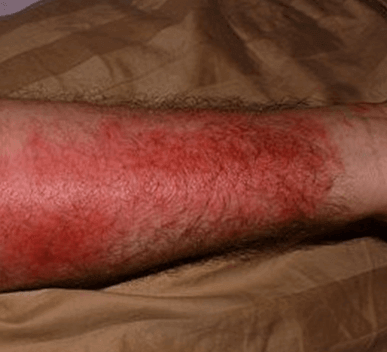Poison ivy, oak and sumac are common names for the itchy rash that develops on the skin wherever you come in direct contact with these vine plants. The rash itself is not contagious, nor is the blister fluid that may ooze from the affected area. Rarely, the rash can be dangerous if you experience swelling of the face or eyes, or if you have trouble breathing or swallowing.
Tues: 8:30am - 3:00pm
Wed: 12:00pm - 6:00pm
Thurs: 8:30am - 3:00pm
Fri: Closed
Sat: 8:30am - 12:30pm
Sun: Closed
Greenvale, NY 11548
Poison Ivy, Oak and Sumac


What is poison ivy, oak and sumac?
What causes poison ivy, oak and sumac?
The rash from poison ivy, oak and sumac is caused by an oil called urushiol which naturally occurs on each of the plants. Common signs of exposure to urushiol include a red, itchy rash which may occur in lines or streaks, blisters, crusting, and swelling. These symptoms may not be immediately evident because the rash may not begin to appear until 12 hours to several days after your bare skin touches the oil. Because the plants can release urushiol into the air, even being near poison ivy, oak and sumac is enough to trigger a rash in extremely allergic people. You can also develop symptoms from indirect exposure to the oil via contact with pets, clothes, gardening tools or other items that may have the resin on it. Up to 85 percent of the American population is allergic to the oil in poison ivy, oak and sumac and will develop a reaction on exposure.
How dermatologists diagnose poison ivy, oak and sumac
Your dermatologist will often be able to diagnose poison ivy, oak or sumac simply by looking at the skin rash. You may be asked questions about recent outdoor activity to determine whether and how you came in contact with one of these toxic plants, as well as your medical history to determine if you may be at risk for more severe conditions developing from poison ivy, oak or sumac.
How dermatologists treat poison ivy, oak and sumac
Your dermatologist may recommend a prescription for topical cortisone cream that can be applied directly to the rash to help decrease the symptoms and inflammation caused by the resin. Although there are over-the-counter ointments for treating the rash, prescription-strength cortisone creams that your dermatologist can recommend will usually provide much faster relief from the itching and aid healing. In severe cases, a course of oral prednisone may be prescribed.
A superficial infection can sometimes develop at the site of the rash caused by poison ivy, oak or sumac. In these cases, a topical or oral antibiotic may be necessary. If you have swelling, pain, warmth, pus, or other concerning signs at the site of your rash you should have your dermatologist evaluate your condition.
The eruption usually resolves within one to three weeks.
If you are concerned about poison ivy, oak or sumac, click here to schedule an appointment with our board-certified dermatologists or walk into Walk-in Dermatology at your convenience for immediate evaluation.






